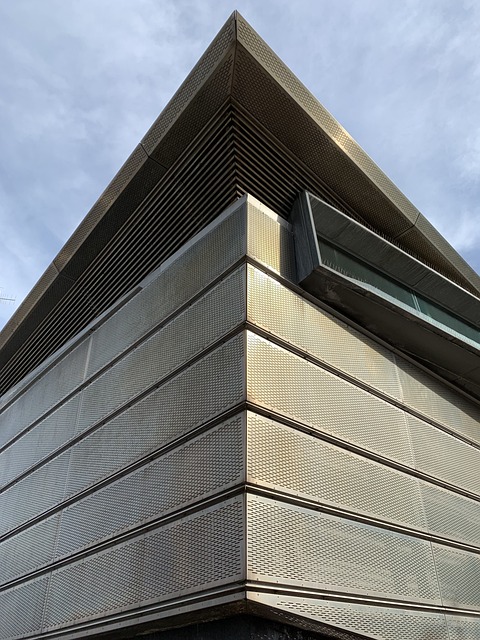Find Your Muse: Visit an Art Museum Today
In a world often dominated by technology and rapid consumption of media, the timeless appeal of art continues to shine brightly. Art museums serve as sanctuaries for creativity, knowledge, and inspiration. They invite individuals from all walks of life to step into a realm where the imaginative works of human expression are preserved, celebrated, and contemplated. Visiting an art museum can be a transformative experience, whether you are an art aficionado, a curious novice, or simply seeking a moment of tranquility amidst the chaos of daily life. In this article, we will explore the numerous benefits of visiting an art museum, the various types of art collections you might encounter, and practical tips to enhance your museum experience. So, let’s embark on this journey to discover how an art museum can help you find your muse!
The Benefits of Visiting an Art Museum
Art museums provide a wealth of benefits that extend beyond the mere viewing of art. They serve as communal spaces for connection, dialogue, and learning. Here are some of the key advantages to be gained from a visit:
Inspiration and Creativity
One of the most immediate benefits of exploring an art museum is the surge of inspiration that can ignite your creativity. Surrounded by stunning masterpieces and innovative works, you may feel a renewed sense of imaginative energy. Art has the power to provoke thoughts and emotions; by immersing yourself in diverse styles and expressions, you may find new ideas stirring within you—perhaps a poem waiting to be penned or a painting yearning to be created.
Educational Enrichment
Art museums are treasure troves of knowledge. Many institutions offer guided tours, workshops, and lectures that deepen your understanding of the art on display. Engaging with art history, understanding the techniques employed by artists, and exploring cultural contexts can enhance your appreciation for the works you encounter. A visit to an art museum becomes an enriching educational experience, allowing you to learn about different eras, styles, and philosophies.
Cultural Connections
Art serves as a powerful medium for expressing cultural narratives. By visiting an art museum, you can gain insight into the history and traditions of various communities around the globe. Exhibitions often showcase works from different cultures, providing a platform for diverse voices and stories. This cultural exchange fosters empathy and understanding, reminding us of our common humanity despite our differences.
Mindfulness and Relaxation
In the hustle and bustle of everyday life, finding moments of peace can be challenging. Art museums offer a serene environment where you can pause, reflect, and breathe. The quiet spaces filled with art create an atmosphere conducive to contemplation. Whether you sit in front of a captivating painting or stroll through a sculpture garden, the act of engaging with art can serve as a form of mindfulness, allowing you to reconnect with yourself.
Types of Art Collections
Art museums feature a diverse array of collections, each telling a unique story and offering various experiences. Some common types of art you may encounter include:
Fine Arts
Traditional fine arts include painting, sculpture, and drawing. Museums often curate diverse collections that span centuries and styles—from the sensual works of the Renaissance to the abstract expressions of modern art. Each piece provides a window into the artist’s perspective, as well as the social and cultural movements of their time.
Decorative Arts
Decorative arts encompass ceramics, textiles, metalwork, and furniture design. These pieces often bridge the gap between art and function, showcasing the craftsmanship and aesthetic sensibilities of their creators. Exploring decorative arts can offer insight into historical daily life and the integration of beauty within the mundane.
Contemporary Art
Contemporary art reflects current trends and topics, often pushing boundaries to challenge societal norms. Visiting a contemporary art exhibit can be an exhilarating experience, as it invites you to engage with the present and examine how artists respond to contemporary issues, including identity, technology, and environment.
Photography
Photography has become a significant art form over the last century, capturing fleeting moments and emotive landscapes. Art museums often showcase compelling photographic exhibitions that can spark discussions about realism, perception, and the nature of art itself. Through the lens of a camera, photographers can tell powerful stories that resonate with audiences worldwide.
Installation and Performance Art
Installation art often transforms a space into an immersive experience, encouraging viewers to engage physically and emotionally with the environment. Performance art can create ephemeral moments of connection and reflection, challenging traditional definitions of art. These dynamic forms can deeply impact the viewer, offering a unique relationship between the artist and the audience.
Enhancing Your Museum Experience
To make the most of your visit to an art museum, consider these practical tips that can enhance your experience:
Plan Ahead
Before your visit, research the museum’s current exhibitions, special events, and any guided tours available. Understanding what is on display can help you prioritize your time and plan your route within the museum. Additionally, you may want to look for special discounts or free admission days to enjoy the museum without breaking the bank.
Take Your Time
Art is meant to be savored. Instead of rushing from one exhibit to another, take the time to truly engage with each piece. Read the descriptions provided, observe the details, and contemplate the emotions conveyed. Allow yourself to linger in front of works that resonate with you. This mindful approach can lead to a more profound understanding and connection with the art.
Ask Questions
Don’t hesitate to engage with museum staff or docents if you have questions or seek insights. Many museums employ knowledgeable personnel who are passionate about art and eager to share their expertise. Engaging in dialogue about the works on display can enrich your experience and offer new perspectives.
Participate in Workshops
Many art museums offer workshops or hands-on art-making sessions that allow you to explore your creativity in a supportive environment. Participating in these activities can help you gain practical skills, meet fellow art enthusiasts, and inspire you to create your own art.
Reflect and Document
After your visit, take some time to reflect on the experience. Consider keeping a journal where you can jot down your thoughts, emotions, and any new ideas that emerged. If you enjoy photography, consider capturing images that resonate with you during your visit, allowing you to share your experience with others.
Art Museums Around the World
While art museums can be found in nearly every major city, some institutions have gained worldwide acclaim for their extraordinary collections and unique architecture. Here are a few notable museums you might consider visiting:
The Louvre, Paris
As one of the largest and most famous museums in the world, The Louvre houses an extensive collection of art, including the enigmatic “Mona Lisa” and the stunning “Venus de Milo.” Its iconic glass pyramid entrance and rich history make it a must-visit for any art lover.
The Museum of Modern Art (MoMA), New York
MoMA is renowned for its influential modern and contemporary art collection. Featuring works by iconic artists such as Van Gogh, Warhol, and Picasso, this museum offers an exciting exploration of modern creativity and its impact on society.
The Uffizi Gallery, Florence
Home to some of the most significant works of the Italian Renaissance, the Uffizi Gallery is a stunning collection of paintings by Botticelli, Michelangelo, and Raphael. The location itself, along the Arno River, adds to the experience, as visitors can soak in the beauty of Florence while immersed in art.
The British Museum, London
This historic institution houses a vast collection of art and antiquities from around the world, including the Rosetta Stone and various artifacts from ancient Egypt and Greece. Its diversity and breadth make the British Museum a fascinating destination for anyone interested in the historical context of art.
The National Gallery, London
Located in Trafalgar Square, the National Gallery presents an impressive collection of Western European paintings from the 13th to the 19th centuries. Visitors can admire works by masters such as Van Gogh, Turner, and Botticelli, all within the grandeur of its stunning architectural space.
Conclusion
Art museums are more than mere collections of beautiful objects; they are spaces of discovery, dialogue, and inspiration. Whether you seek to ignite your creative spark, delve into the depths of culture, or find solace in artistry, visiting an art museum can offer you an unparalleled experience. By engaging thoughtfully with the art on display and taking the time to reflect on your interactions, you will not only enhance your appreciation for the works but also foster a deeper understanding of yourself and your creative instincts. So, find your muse and plan your visit to an art museum today—embrace the beauty and magic that art can bring to your life!


